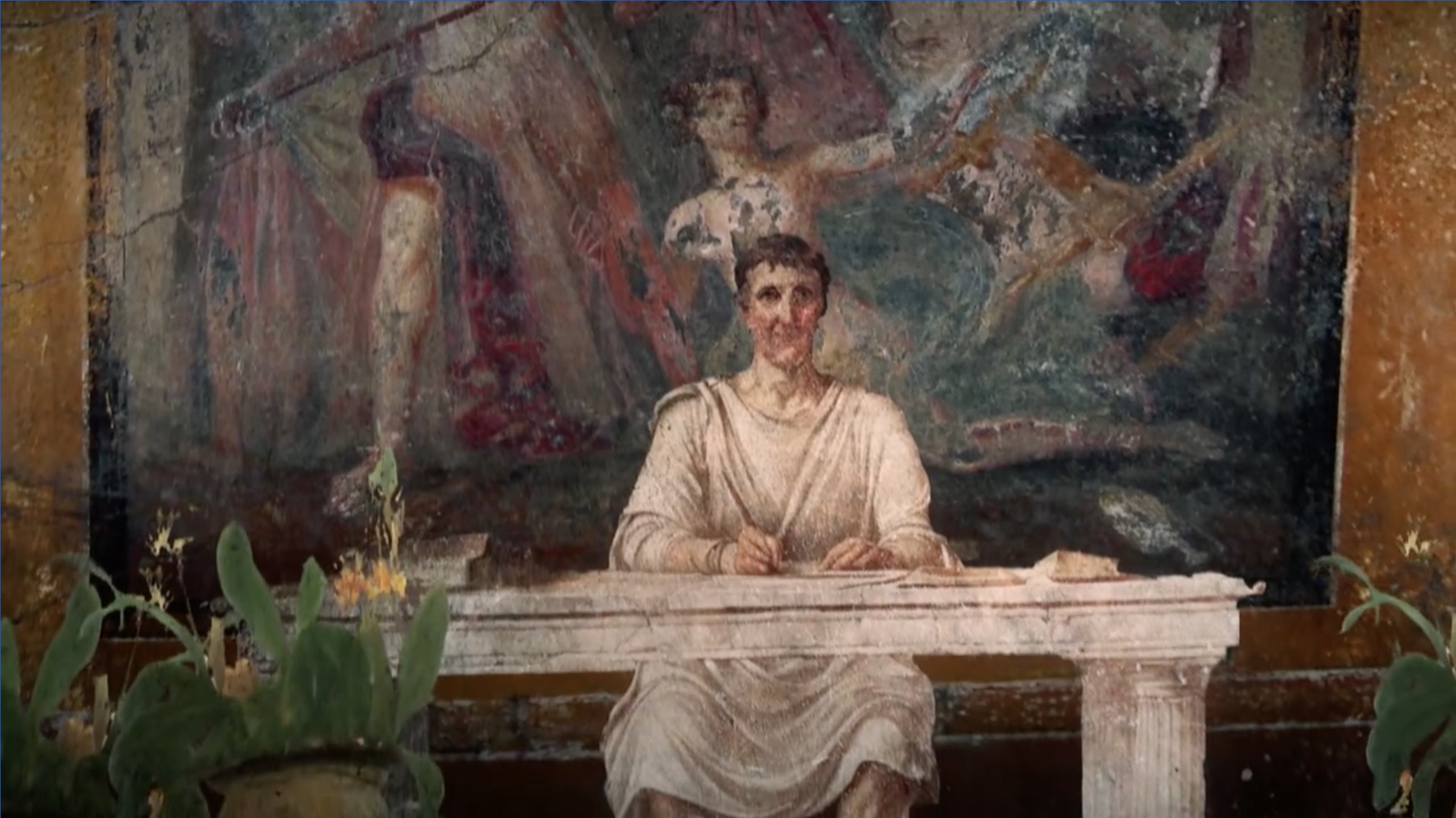Can we identify the survivors of Mount Vesuvius’s devastating volcanic eruption in 79 CE? The second episode of the three-part docuseries Pompeii: The New Dig, which aired last night, May 22, on PBS, is aptly titled “Escape” and investigates this very question.
The latest hour-long chapter in the saga surrounding the new excavation at the ancient city’s archaeological site turns its gaze to those who escaped the noxious gasses, ash, rocks, and volcanic material that spewed from Vesuvius. Pompeii had as many as 30,000 residents at the time, in addition to many domestic animals and livestock. But what percentage of these people were actually able to flee the eruption?
The episode opens near Pompeii at the ancient port of Misenum. The narrator recounts details about the naturalist and commander of the Roman fleet, Pliny the Elder, whose sister alerted him to Vesuvius’s eruption while he lounged in his villa in nearby Bacoli. Underwater archaeologist Michele Stefanile describes the first hours of the eruption’s blast, as noted in letters by Pliny the Younger, the Elder’s nephew. While discussing these crucial early moments, volcanologist Christopher Jackson notes that within the span of an hour and a half, the plume stretched several miles high into the air, according to modern reconstructions. It was visible to many communities in and around the Bay of Naples, and likely an immediate signal that it might be time to flee to safety.
Only around 1,200 Pompeiian bodies have been recovered to date. What, if anything, can this absence of evidence tell archaeologists about those who escaped the eruption? Enter ancient historian Steven Tuck of Miami University in Ohio, who has been working on identifying the refugees of the city based on surviving artifacts and objects for years. As Tuck explains, the distinct dearth of remains of carts and horses in a city once full of such transportation points to its residents’ swift evacuation. Using everything from garum vessels made for fresh mackerel sauce labeled by a major seller to inscribed epitaphs of late family members, the episode follows Tuck and art historian Ann C. Pizzorusso on a mission to track down written evidence of the families who fled Pompeii and were forced to relocate.
Meanwhile, back at the ancient bakery featured in the first episode, the Italian excavators continue to piece together more of the city block in the wealthy district that their colleagues previously explored. After tracing the source of running water and drains in the bakery, archaeologist and historian Miko Flohr explores whether the structure next door was a laundering facility known as a fullery. As he explains on-site, owning large laundry facilities opened the doors to the upper echelons of society in the city’s “sharply unequal” business community. The two stories interwoven in the episode — one about wealthy businesspeople living in the city and another about identifying the mass of people who fled — provide a striking picture of daily life and its obliteration by the sudden volcanic eruption.

The inscriptions found by Tuck and Pizzorusso across Pompeii and the surrounding area, from inscribed millstones to epitaphs, allow the families, businesses, and survivors of Vesuvius’s eruption to come into focus once again. Throughout the episode, we see the archaeologists translate these tiny texts before examining ruts on the street or scanning a repurposed water spout for further clues, acting as careful detectives restoring an ancient community. Ahead of the series finale next week, “Escape” is an important reminder of the scientific nature of such archaeological excavation and the expertise it requires. Rather than tuning in to hear pseudo-academics discuss aliens, mysteries of the deep, or Atlantis, we should perhaps invest time into creating more shows that illuminate how both evidence and a lack thereof can teach us about the past.


